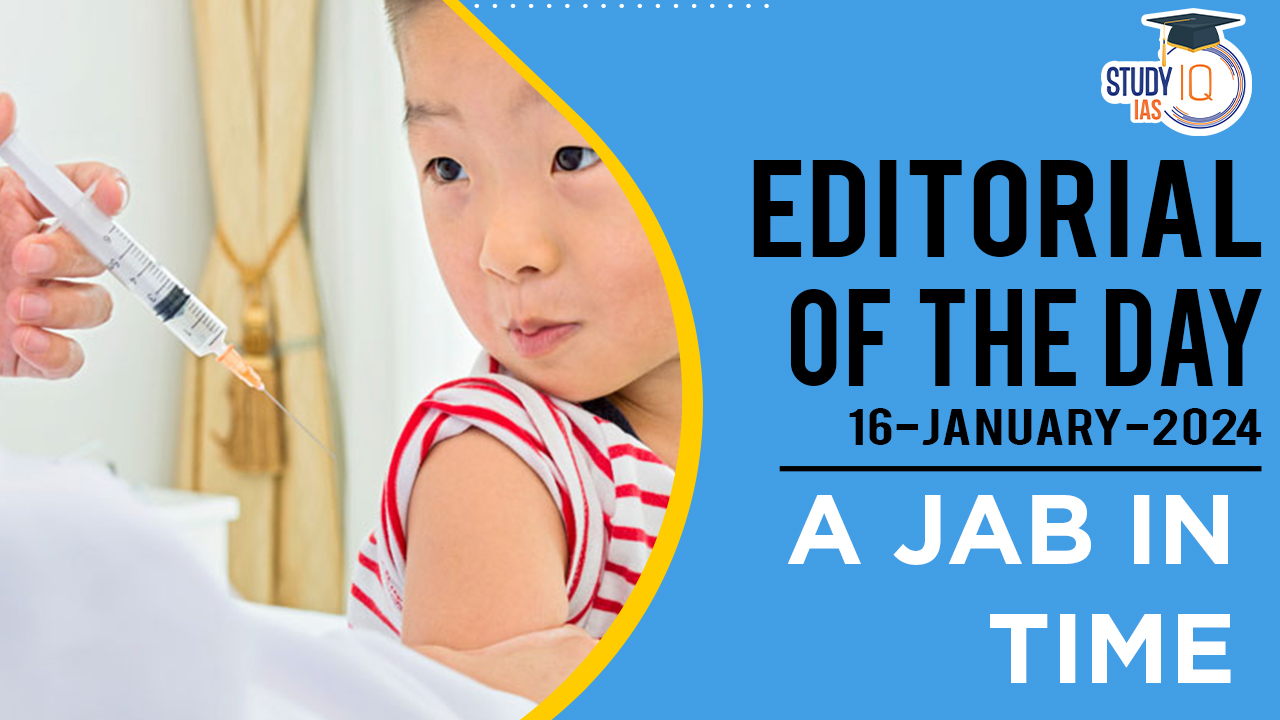Table of Contents
Context: The article titled “A jab in time” emphasises the importance of a comprehensive approach to cervical cancer prevention and treatment.
About Cervical Cancer
- It is the second-most common cancer among women in India, with over 1 lakh new cases and 77,000 deaths in 2022.
- Globally, it contributes to one-fifth of the total burden.
- Cause: Primarily caused by persistent high-risk Human Papilloma Virus (HPV) infection, with co-factors like low socioeconomic status and immunity.
- Detection: Precancerous and cancerous stages can be identified through screening tests like HPV tests and visual assessments.
- Treatment: Precancerous lesions can be treated effectively with simple outpatient procedures.
- Prevention: HPV vaccination in girls aged 9-14 is highly effective in preventing infection and future cancer development.
We’re now on WhatsApp. Click to Join
Necessity
- High burden: India accounts for 20% of global cervical cancer cases and deaths.
- Prevention and curability: Early detection and intervention can significantly improve outcomes, with a 93% cure rate for early-stage cases.
- Sustainable Development Goal: Eliminating cervical cancer contributes to reducing premature deaths by 2030 (SDG 3.4).
Key interventions
- HPV vaccination:
- Recommended for girls aged 9-14.
- Prevents infection with high-risk HPV types.
- Most effective before sexual debut.
- Screening:
- Regular Pap smears or HPV tests recommended for women aged 30-45.
- Detects precancerous changes before they become cancerous.
- Simple and easily available.
- Early diagnosis and treatment:
- Effective treatment options exist for pre-cancerous and early-stage cancer.
- Palliative care available for advanced stages.
Challenges
- Awareness: There is a significant lack of awareness about cervical cancer, which results in late detection and treatment.
- Vaccination: The percentage of fully vaccinated 15-year-old girls against HPV is currently low.
- Treatment Access: Access to treatment for women with cervical pre-cancer and cancer is not adequate to meet the 2030 mortality reduction target.
- Healthcare Burden: There is an anticipated increase in demand for cancer care treatments by about 20% in the next decade.
- Diagnostics: The diagnostics confirmation step in the patient journey from “screen-positive” to “treatment” is underutilised, leading to delayed or missed treatment opportunities.
- Policy Implementation: The need for robust policy frameworks and public-private partnerships to strengthen the health system has been identified as a challenge.
- Technology Use: There is a gap in testing and implementing artificial intelligence technologies for early and accurate diagnosis and treatment planning.
- Comprehensive Care: The integration of prevention, treatment, and palliative care services is still not fully realised, which is necessary for a holistic approach to managing cervical cancer.
Moving Forward
- Strengthening awareness campaigns: Educating communities about cervical cancer, its causes, prevention, and treatment options.
- Scaling up vaccination programs: Ensuring high coverage and access to HPV vaccines for eligible girls.
- Improving screening services: Expanding access to accurate and affordable screening tests.
- Building capacity for treatment: Training healthcare providers and equipping facilities for pre-cancer and cancer treatment.
- Enhancing partnerships: Collaboration between government, NGOs, healthcare professionals, and researchers is vital for effective implementation.


 5 Years of SVAMITVA Scheme and Its Benef...
5 Years of SVAMITVA Scheme and Its Benef...
 Places in News for UPSC 2025 for Prelims...
Places in News for UPSC 2025 for Prelims...
 Countercyclical Capital Buffer (CCyB): P...
Countercyclical Capital Buffer (CCyB): P...





















